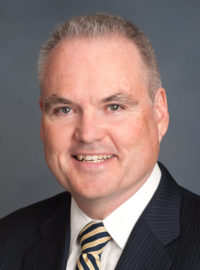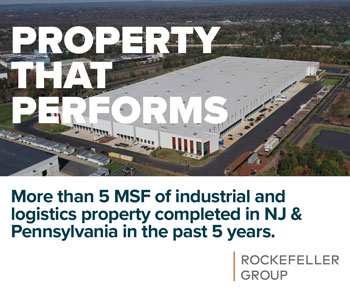By Joshua Burd
In a state that is increasingly dependent on redevelopment in densely populated, infrastructure-rich towns and cities, lawmakers are mulling changes to a tax abatement statute that is often seen as critical to bringing those projects to life.
Several bills introduced in recent months would amend the state’s redevelopment law and the rules governing tax abatements and payments in lieu of taxes, also known as PILOTs. Those changes include mandating that municipalities share PILOT revenue with their school districts and requiring developers who receive the abatements to hire union labor for smaller projects.
Such proposals are a source of growing concern for commercial real estate leaders, who say the changes would severely curtail redevelopment efforts across the state.

“There is legislation out there that, through different avenues, will kill PILOTs,” said Stephen Santola, executive vice president and general counsel with Woodmont Properties, speaking during a recent seminar hosted by NAIOP New Jersey.
“They don’t knock the statute out or look to repeal the statute,” he added. “They just put so many burdens on the statute that nobody will ever use it again.”
The tool has become increasingly important and widespread in New Jersey over the past decade. Experts say PILOTs help plug financing gaps, trim operating expenses and give certainty to developers by offering a payment schedule for up to 30 years, while also serving as a way for municipalities to incentivize projects that help boost their tax rolls and satisfy other objectives.
“We feel very strongly that most residential redevelopment projects that are being done today don’t work without a PILOT,” said Ed Russo, CEO of Russo Development. “They’re really a necessity for most projects because of the constraints and the costs, and I think we’ve seen a trend now: Many more communities are open-minded to PILOTs, particularly for residential projects. That wasn’t the case in the recent past.”

Russo said that goes not only for the state’s urban municipalities, which were among the first to consider the use of PILOTs, but for more suburban communities that have come to embrace redevelopment. The Carlstadt-based firm has done more than a dozen PILOTs for multifamily projects in recent years, Russo said, adding that it has financial agreements pending for another three in its pipeline comprising more than 1,700 units.
But the spread of tax abatements has come with increased scrutiny and criticism from opponents. One of the biggest points of contention is how that revenue is distributed. A municipality must dedicate 5 percent of its PILOT revenue to its county government, but it is not required to share any of those funds with its school district. Under conventional property taxes, the school budget typically accounts for the largest portion of a homeowner’s or commercial landlord’s bill.
How tax abatement revenue is divvied up could stand to change under the recently introduced legislation in Trenton. One bill, sponsored by Senate President Stephen Sweeney, would require certain municipalities to share with the board of education a portion of PILOT payments that is “in direct proportion” to the amount raised for the school district through conventional property taxes. The change would apply to school districts that are deemed to be “contributing less than its full local share of property taxes” based on the state’s school funding laws.
A spokesman for Sweeney did not follow up on a request for a comment about the proposal.
A separate bill introduced by Assemblyman Nicholas Chiaravalloti, Democrat of Bayonne, would require the municipality to share 5 percent of the annual PILOT payment with the board of education in the case of residential projects. A statement released with the measure noted that boards of education “technically are not being ‘shorted’ any property taxes under current law,” since municipalities ultimately collect taxes on their behalf, but argues that taxpayers are footing the bill for educating any students who live in the tax-exempt properties.
“Effectively, all property taxpayers who do not reside in these property tax-exempt properties are burdened by paying the costs of educational services on behalf of the owners of these property tax-exempt properties,” the statement reads. “It is the intent of the sponsor of the bill that boards of education share in the revenue generated from annual service charges collected by municipalities from property tax-exempt residential redevelopment projects, in order to provide some property tax relief to local property taxpayers.”
It remains to be seen if those bills gain traction in the Legislature, but they are nonetheless raising questions among commercial real estate experts.
John R. Lloyd, a real estate and development attorney with Chiesa Shahinian & Giantomasi PC, said that, as PILOTs “become more utilized and more noteworthy, then questions about them are to be expected.” But he said the “but for” question is important to consider when weighing the pros and cons of tax abatements: But for the PILOT, would the development occur in the first place? Would the municipality be realizing additional revenue from what had been a vacant or underutilized property?

Lloyd added that it was something of a misnomer that the school district is hurt by not getting a share of PILOT revenue. Unless the municipality in question is part of a regional school district, “then it’s really the same taxpayer” that is affected by swings in the ratable base.
“As far as the taxpayer is concerned, the issue really should be ‘Is the taxpayer better off or not better off by having this development?’ ” said Lloyd, a member of the West Orange-based firm. “Because whether the taxpayer is paying money to the municipal budget or to the school budget, they’re paying. So when you have money coming into the town, that helps that taxpayer.”
Ultimately, “it’s a matter of degree,” he said, noting that, for the developer, the savings realized from the tax abatement can be the difference in making the project financially feasible. Yet municipalities might be tempted to ask for larger PILOT payments during negotiations if they were required to divert more revenue to their school district.
“(With) any law that would require further payment going to the school — if that would lead the municipality to increase the PILOT amount for its needs — it’s a question of whether that additional amount makes the project unfeasible,” Lloyd said. “So it’s really a case-by-case basis.”
The debate over PILOTs comes with even higher stakes, as municipalities face new mandates to create affordable housing in New Jersey. The state Supreme Court took control of affordable housing creation in 2015, leading to more than 100 settlements between local governments and advocates for building new low- and moderate-income residential units.
That means developers will have the opportunity to create hundreds of thousands of new homes in the coming decades, but they argue that doing so will be difficult without subsidies and financial tools such as tax abatements.
“Nobody in Trenton seems to have made the connection between PILOTs and affordable housing, so now we have all of these municipalities settling their (affordable housing) lawsuits that are going to need 600 or 700 affordable units,” Santola said. “The only way they’re going to get built is through jobs and projects that earn PILOTs.”
A case study in PILOTs
In recent years, Elberon Development Group has become all too familiar with using a payment in lieu of taxes agreement to help make the numbers work in redevelopment projects.
The firm, in fact, has done four PILOTs in its home city of Elizabeth, starting with a project that created a new state-of-the-art distribution center for Wakefern Food Corp. By around 2010, the company’s footprint along York Street had grown to nearly 500,000 square feet as a result of a series of piecemeal additions built by Elberon over more than 40 years.

The supermarket cooperative set off in search of a new facility that could serve its network of stores across the Northeast. But after Wakefern looked at several other options, Elberon began to explore the possibility of keeping the company in Elizabeth by razing the existing buildings and constructing a new distribution hub in its place.
The ensuing PILOT agreement between local officials and Elberon helped solve what was “an enormously complicated deal,” Elberon CEO and President Dave Gibbons said, paving the way for the construction of the new 524,000-square-foot facility and the retention of some 300 jobs in the city.
Executives with Elberon and Wakefern joined public officials in April 2014 to cut the ribbon on the new building.
“We learned a lot over the duration of this project,” Gibbons, who also serves as NAIOP’s New Jersey chapter president, said during the recent PILOT seminar. “PILOTs and redevelopment go hand in hand, and we could not have done this project without one. But the negotiation process was incredibly complex, and thankfully we worked with a sophisticated municipality that was invested in keeping Wakefern from moving elsewhere.”










